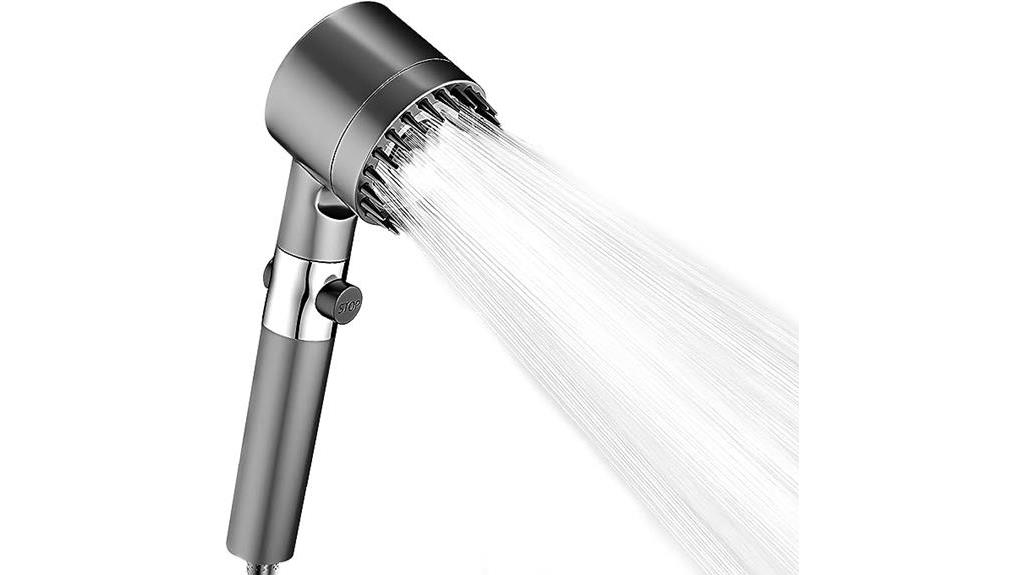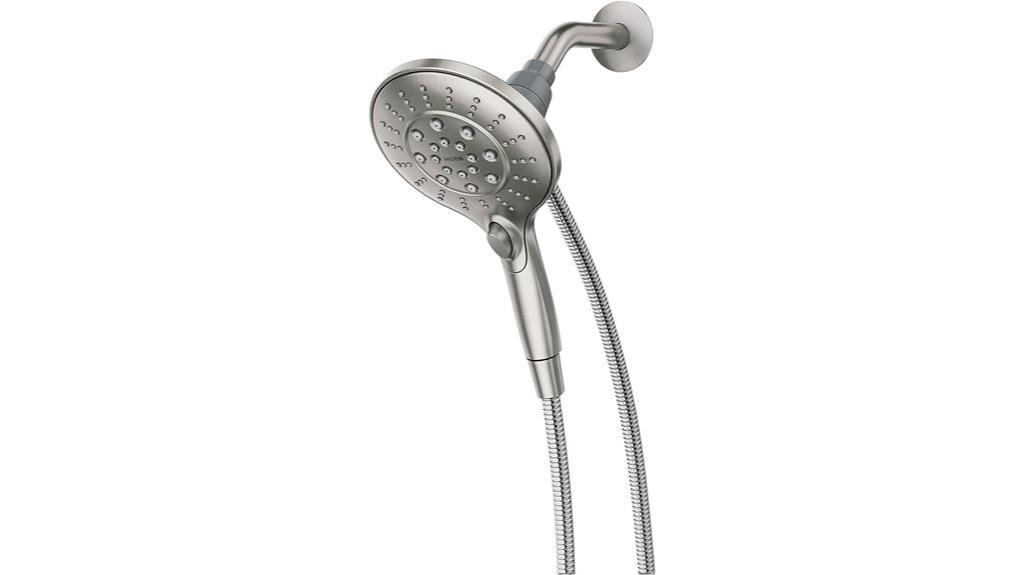Ladies and gentlemen, let us delve into the intricate world of toilet troubleshooting.
Imagine, if you will, the frustration when faced with a broken handle, rendering our porcelain throne temporarily useless. Fear not, for we shall navigate this quandary together.
In this informative guide, we shall unveil the steps required to flush a toilet when the handle fails. Prepare yourselves, for mastery in the art of toilet maintenance awaits.
Let us embark on this journey towards a functional lavatory.
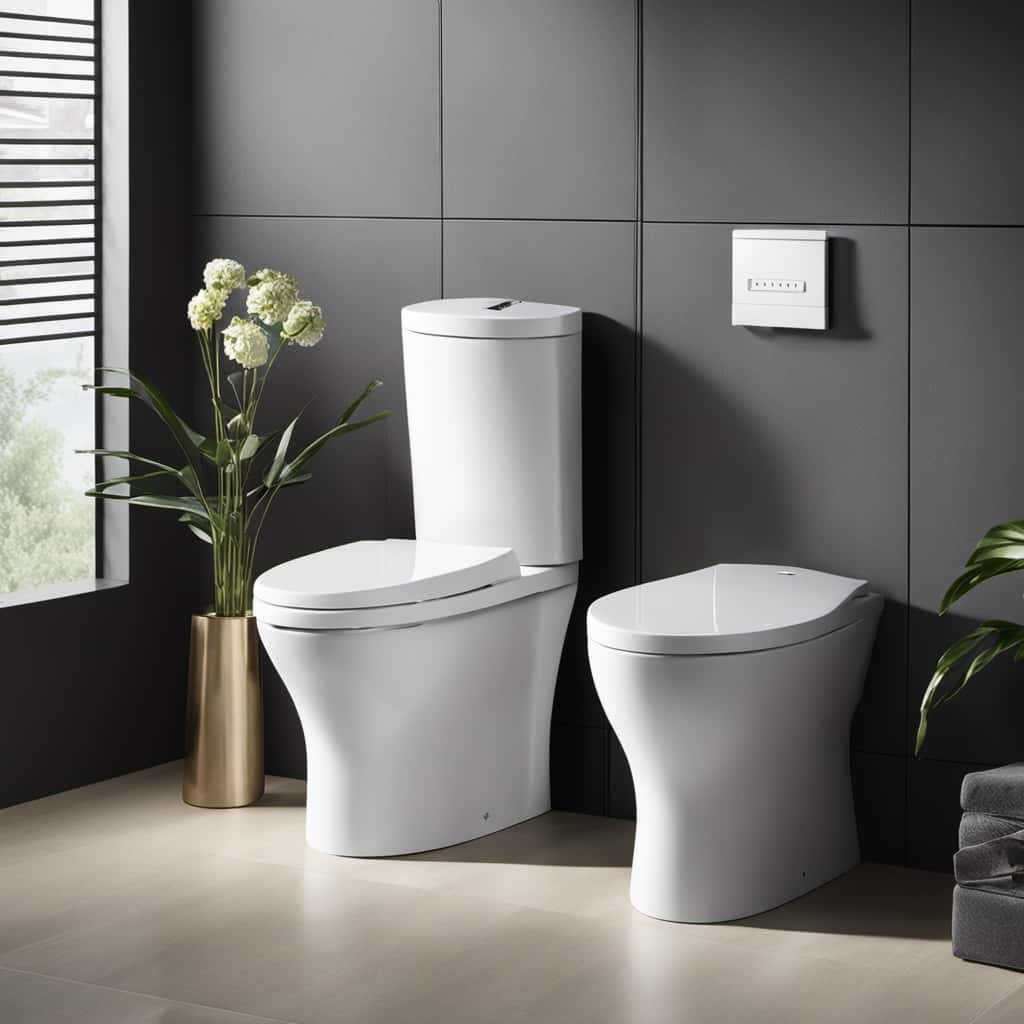
Key Takeaways
- Checking and addressing issues in the toilet tank is necessary for proper flushing.
- Locating and preserving the flush valve is important for maintaining toilet functionality.
- Temporary flushing methods can be used if the handle breaks to flush the toilet.
- Fixing or replacing the broken handle is essential to ensure proper flushing.
Check the Inside of the Toilet Tank
To check the inside of the toilet tank, we’ll need to remove the lid and examine the components. This step is crucial in troubleshooting common toilet problems and checking for water leaks.
Start by locating the lid of the toilet tank and carefully lift it off, setting it aside in a safe place. Take a moment to observe the interior of the tank and familiarize yourself with the different parts.
Inspect the fill valve, which is usually located on the left-hand side of the tank. Ensure that it’s securely attached and not leaking any water.
Next, check the flapper valve, which is responsible for controlling the flow of water into the bowl. Make sure it’s properly seated and not worn out.
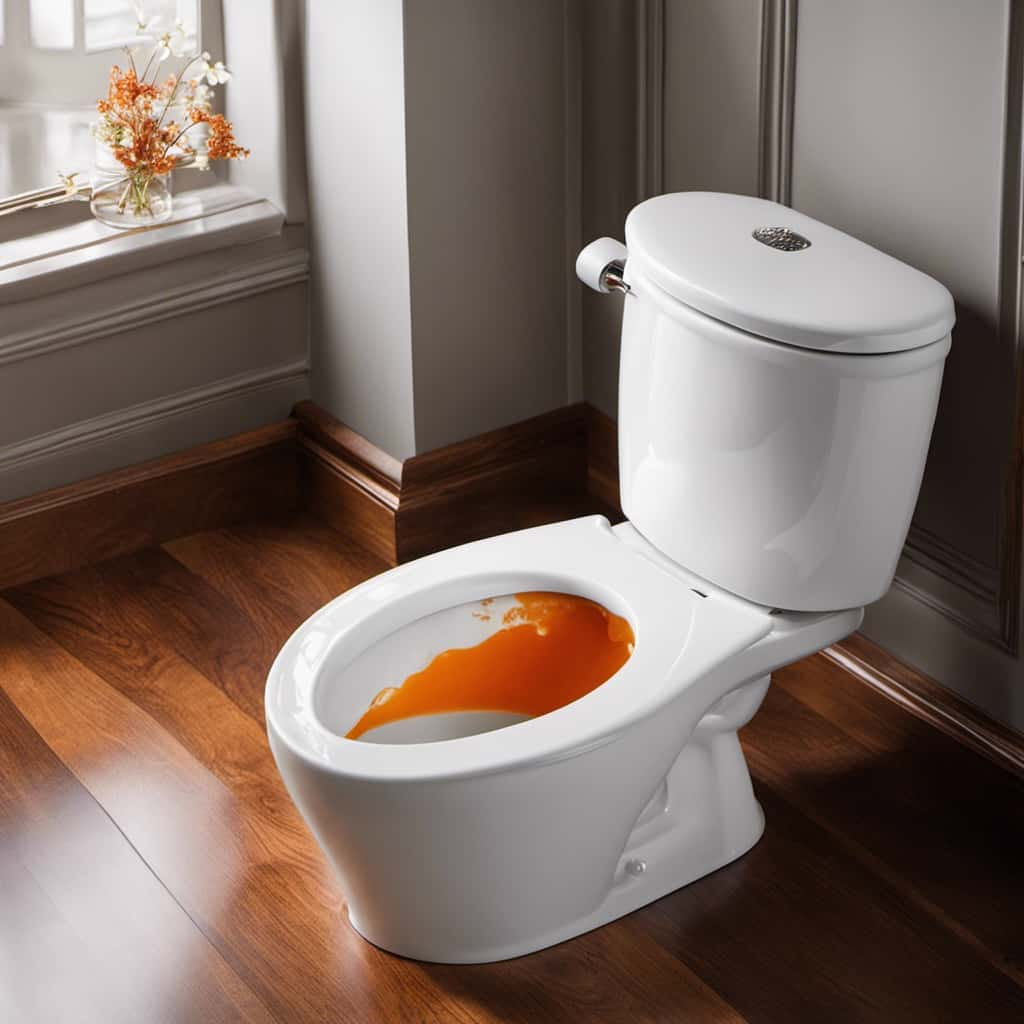
By checking these components, you can identify any potential issues and address them accordingly.
Now, let’s move on to the next step and locate the flush valve.
Locate the Flush Valve
To continue our troubleshooting process, let’s now locate the flush valve inside the toilet tank. The flush valve is an essential component that controls the flow of water from the tank to the bowl during a flush. It’s usually situated in the center of the tank, directly below the handle.
Begin by removing the tank lid and inspecting the area. Look for a plastic or rubber flapper, a cylindrical tower, or a canister-type device. These are common types of flush valves.
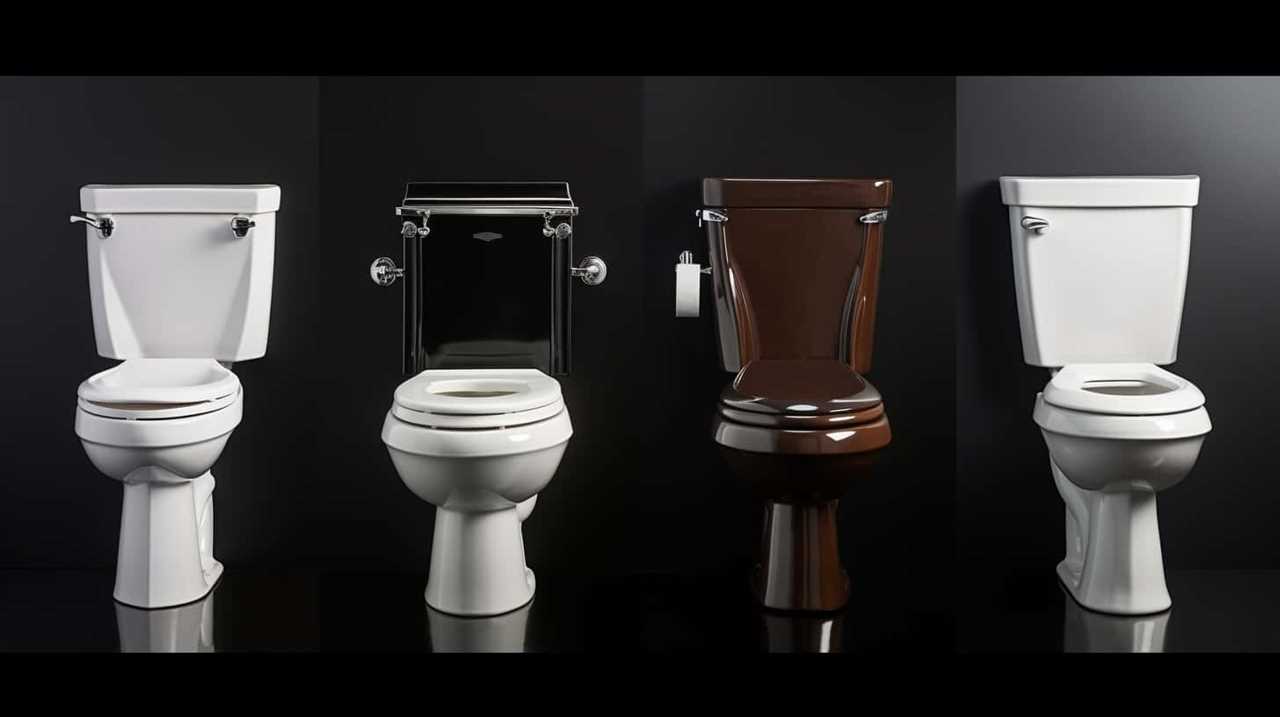
If you need to replace the flush valve, it’s recommended to call a plumber, especially if you aren’t familiar with toilet repairs. A professional plumber will have the expertise and tools necessary to ensure a proper replacement and prevent any further damage to your toilet.
Use a Temporary Flushing Method
We can employ an alternative flushing technique when faced with a broken handle. In emergency toilet situations or when quick fixes for broken toilet handles are needed, there are temporary flushing methods that can be used. Here’s a step-by-step guide on how to do it:
- Lift the toilet tank lid and locate the flapper valve.
- Gently lift the flapper valve to allow water to flow into the toilet bowl.
- If the flapper valve isn’t accessible or doesn’t work, locate the fill valve or overflow tube.
- Gradually pour a bucket of water into the toilet bowl, aiming for the center.
- The force of the water should create enough pressure to flush the toilet.
- Repeat the process if necessary until the toilet is completely flushed.
These emergency toilet solutions provide a temporary fix until the broken handle is repaired or replaced. Remember to exercise caution and shut off the water supply if needed.
Consider Using a Bucket of Water
Using a bucket of water is an effective and simple solution to flush a toilet when the handle breaks. It’s one of the alternative solutions that can help troubleshoot this issue. Here are some troubleshooting tips to successfully use a bucket of water to flush your toilet:

- Fill a bucket with water. Make sure it’s large enough to hold a sufficient amount of water to create a strong flush.
- Lift the toilet seat and locate the opening at the bottom of the bowl.
- Pour the water into the bowl in one swift motion, aiming for the opening.
- The force of the water should create enough pressure to flush the waste down the drain.
- Repeat the process if necessary until the toilet is properly flushed.
Using a bucket of water can be a temporary solution, but it’s important to fix or replace the broken handle to ensure long-term functionality.
Now, let’s move on to the next section: ‘Fix or Replace the Broken Handle.’
Fix or Replace the Broken Handle
Now, let’s address the issue of repairing or replacing the broken handle to ensure the toilet’s proper functionality. When it comes to handle replacement options, there are a few things to consider.
First, examine the handle to determine the type of replacement needed. Most toilet handles are either a front-mount or side-mount style.

Next, purchase a replacement handle that matches the style and finish of the old handle.
To replace the handle, start by shutting off the water supply to the toilet. Remove the tank lid and disconnect the chain or lever from the old handle.
Install the new handle by following the manufacturer’s instructions. Once installed, test the handle to ensure it flushes the toilet properly.
If troubleshooting common toilet handle issues, such as a loose handle or a handle that sticks, consider adjusting the handle’s position or tightening any loose screws.
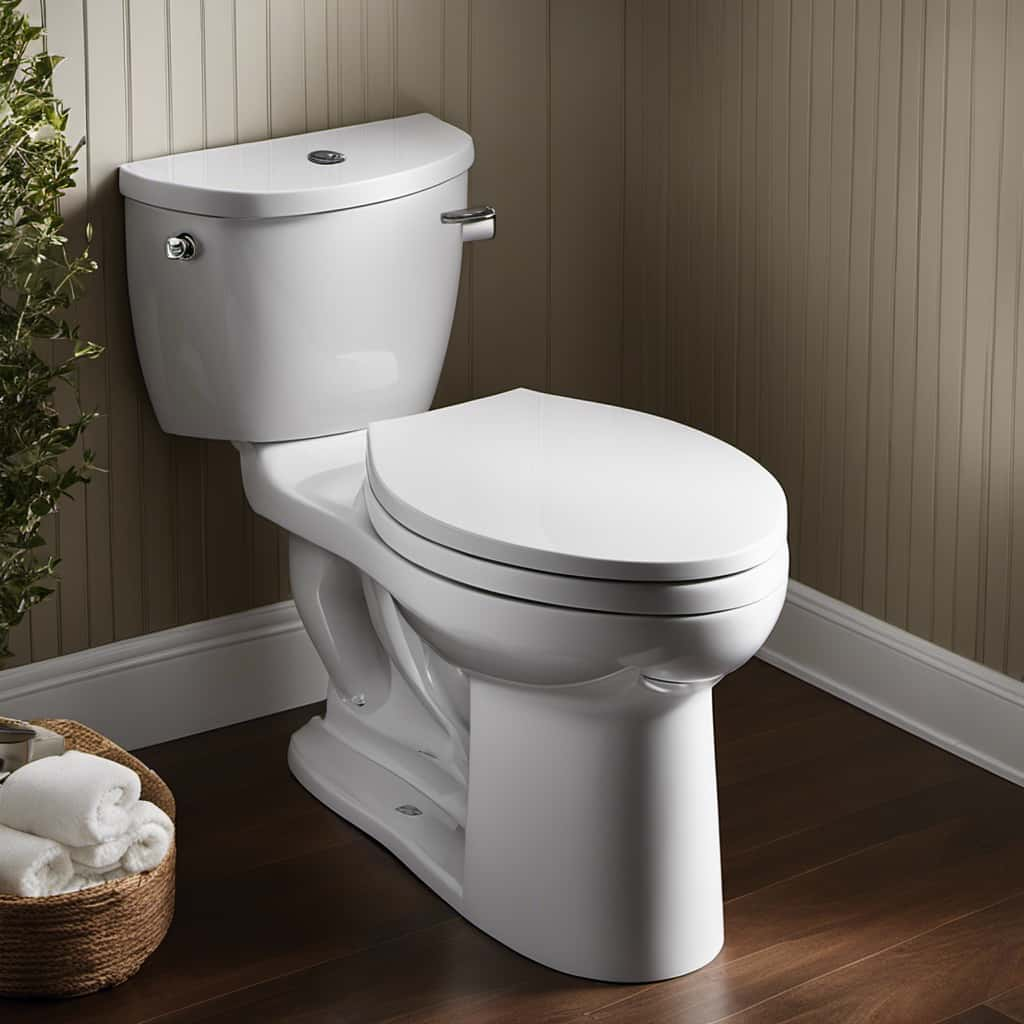
Frequently Asked Questions
How Can I Determine if the Handle of My Toilet Is Broken?
To determine if a toilet handle is broken, we can troubleshoot by checking for any signs of damage or malfunction. This involves examining the handle for cracks, loose connections, or difficulty in flushing.
What Are Some Common Reasons for a Toilet Handle to Break?
Common causes of a toilet handle breaking include rust, wear and tear, or excessive force. To repair it, you’ll need to turn off the water supply, remove the old handle, and replace it with a new one.
Can I Fix a Broken Toilet Handle by Myself, or Do I Need to Call a Professional Plumber?
We can fix a broken toilet handle ourselves using DIY toilet handle repair techniques. However, it’s important to weigh the pros and cons of hiring a professional plumber for toilet handle repair.
Are There Any Safety Precautions I Should Take When Attempting to Fix a Broken Toilet Handle?
When attempting to fix a broken toilet handle, it is important to take safety measures. In the meantime, you can use alternative flushing methods such as lifting the chain or using a bucket of water.
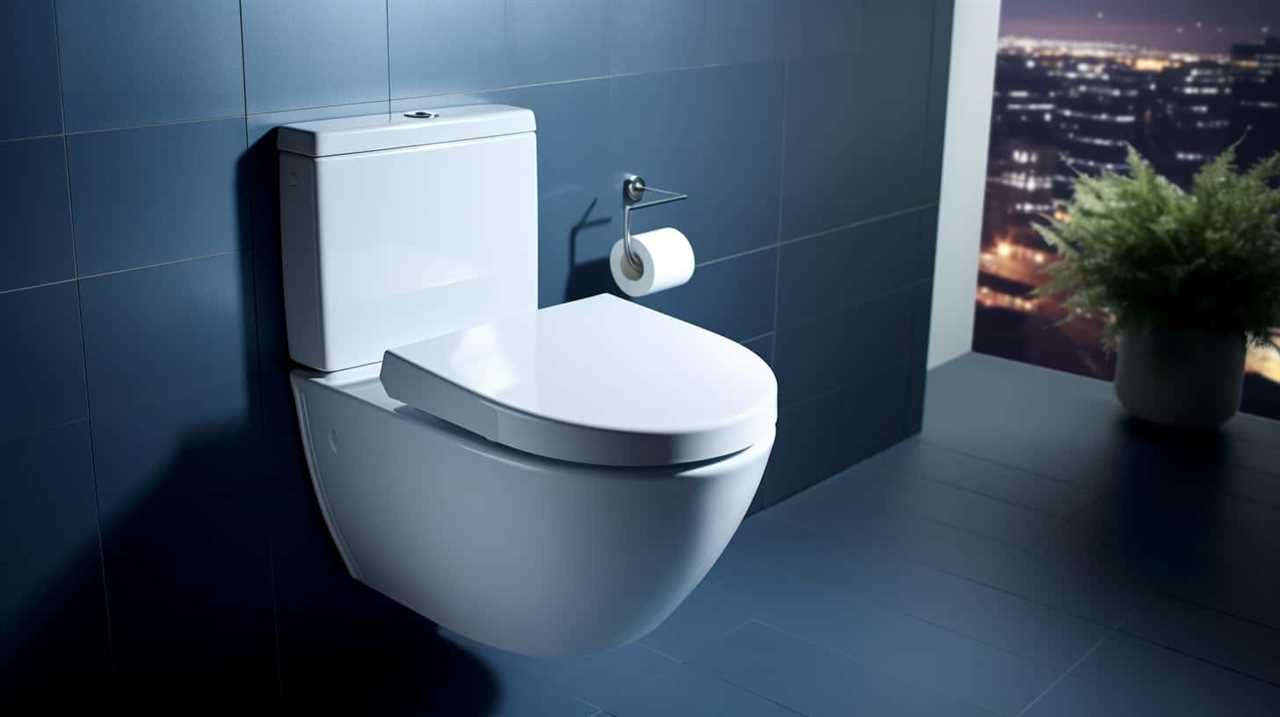
Is It Possible to Prevent the Toilet Handle From Breaking in the First Place?
To prevent toilet handle breakage, proper toilet handle maintenance is key. Here are some tips for extending the lifespan of a toilet handle: tighten screws regularly, lubricate moving parts, and avoid excessive force when flushing.
Conclusion
In conclusion, when faced with a broken toilet handle, there are several steps you can take to still flush the toilet. By checking the inside of the toilet tank and locating the flush valve, you can use a temporary flushing method or even consider using a bucket of water.
However, it’s important to fix or replace the broken handle as soon as possible to ensure proper functioning of the toilet. Interestingly, studies have shown that approximately 40% of toilet handle failures are due to wear and tear.



